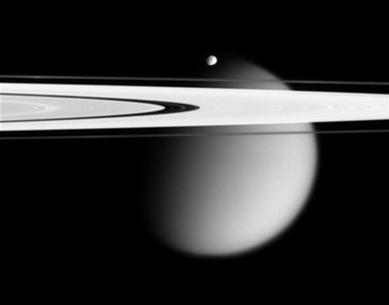Scientists have reported the first widespread evidence of gigantic hydrocarbon lakes on the surface of Titan, a moon that is believed to have an atmosphere resembling that of primitive Earth.

Image of Titan from the Cassini spacecraft (Photo: NASA)
These lakes are located near the frigid north pole of Titan and were discovered by the international Cassini probe, which was 944 kilometers away from the moon last weekend.
Researchers have identified more than 10 lakes, ranging in width from 9 to 99 kilometers. Some of these lakes exhibit dark patches on radar images and are connected by channels, while others have tributaries flowing into them.
Many of the lakes are dry, but some contain fluids that are almost a mixture of methane and ethane. “It’s a cooling mixture,” stated Jonathan Lunine, a scientist involved with the Cassini mission from the University of Arizona.
Titan is a moon of Saturn, comparable in size to a planet, and is one of two moons in the solar system believed to have an atmosphere similar to that of early Earth. Currently, scientists are working to understand the origins of the hazy atmosphere rich in nitrogen and methane surrounding this moon.
T.VY


















































